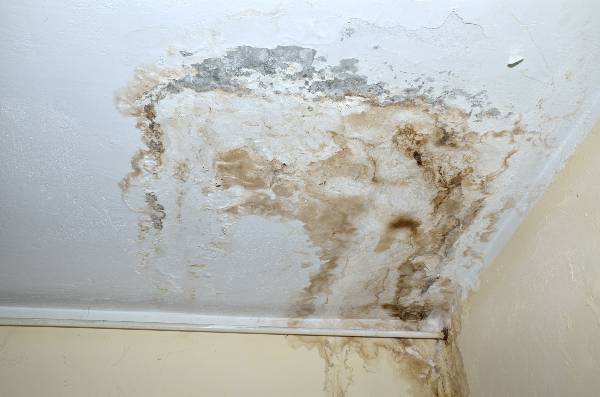Exactly how to Inspect If Your Residence Has a Hidden Leak
Exactly how to Inspect If Your Residence Has a Hidden Leak
Blog Article
Everyone seems to have their own unique theory involving Locating water leaks.

Early discovery of leaking water lines can alleviate a prospective catastrophe. Some small water leaks might not be visible.
1. Examine the Water Meter
Examining it is a proven method that helps you discover leaks. If it relocates, that suggests a fast-moving leakage. This means you might have a sluggish leak that can even be below ground.
2. Inspect Water Usage
Evaluate your water costs and track your water consumption. As the one paying it, you ought to observe if there are any kind of disparities. If you detect sudden changes, despite your usage being the same, it means that you have leaks in your plumbing system. Bear in mind, your water bill need to fall under the very same array each month. An unexpected spike in your bill suggests a fast-moving leakage.
Meanwhile, a constant boost monthly, even with the very same habits, reveals you have a slow leak that's also slowly rising. Call a plumber to thoroughly check your property, specifically if you really feel a warm area on your floor with piping below.
3. Do a Food Coloring Test
When it comes to water consumption, 30% comes from toilets. If the shade somehow infiltrates your bowl during that time without flushing, there's a leakage between the tank as well as dish.
4. Asses Exterior Lines
Don't neglect to inspect your outdoor water lines as well. Ought to water seep out of the link, you have a loose rubber gasket. One little leak can lose heaps of water and increase your water expense.
5. Assess the scenario and also examine
House owners must make it a habit to inspect under the sink counters as well as even inside cabinets for any bad odor or mold and mildew development. These 2 red flags indicate a leakage so punctual attention is called for. Doing routine inspections, also bi-annually, can save you from a major trouble.
If you understand your residence is already old, keep a watchful eye on your heaters, tubes, pipelines and so on. Look for stainings and deteriorating as the majority of appliances and also pipelines have a life span. They will likewise naturally wear away because of wear and tear. If you presume leaking water lines in your plumbing system, don't await it to intensify. Call a specialist plumber right away so you do not wind up with a dreadful mess in your home.
Early discovery of dripping water lines can minimize a prospective disaster. Some small water leaks might not be noticeable. Inspecting it is a proven method that assists you discover leaks. One tiny leakage can lose heaps of water and increase your water costs.
If you think leaking water lines in your plumbing system, do not wait for it to rise.
How to Know If Your Home Has a Hidden Leak
Water Meter Reveals Inexplicable Water Usage
If you’d like to test whether or not there’s a leak somewhere in your home, you can do this using your water meter. Here is how to conduct the test:
Don’t use any water in your home for at least 30 minutes; this also means not turning on faucets or water-using appliances.
Go outside, and check your water meter for activity.
If your water meter shows that there was activity, even though no one was using any water, this proves that there is a leak in your home.Visible Mold or Mildew Growth
Leaks behind walls create moist, dark environments that allow mold and mildew to grow and thrive. Eventually, you might see mold growth forming on the wall closest to a hidden leak.
If mold is growing in an area that receives a high amount of moisture, such as a bathroom, it may simply be an indication that better ventilation is needed. However, if you see mold growth on a wall or the ceiling in an area where you would not expect, you probably have a hidden leak.
Musty, Mildew Odor
Sometimes you might not be able to see the mold or mildew that is growing as a result of a leak. However, the smell can give the problem away just as easily. If you catch a whiff of something musty, there’s a good chance that old water is collecting somewhere in your home that you can’t see.
Stained/Warped Walls, Ceilings, or Floors
When your home soaks up water, a variety of red flags can become visible, including ceiling stains, bubbling drywall, warped walls, and sagging floors. While these issues can be caused by excess humidity, they can also be signs that a pipe or plumbing connection has started leaking behind your walls.
Inexplicably High Water Bill
After a while, you get a general sense for what your water bill should be. If you own a pool or sprinkler system, your bill will tend to be higher during summer. However, if you receive a water bill that seems especially high, and you can’t figure out what caused it, then you may have a hidden leak somewhere that’s increasing your bill.
https://www.plumbingjoint.com/blog/2019/july/how-to-know-if-your-home-has-a-hidden-leak/
.jpg)
As a serious reader on Finding hidden leaks, I imagined sharing that information was smart. Please take the time to promote this blog post if you appreciated it. Many thanks for your time. Kindly stop by our website back soon.
Report this page